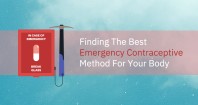
The Symbicort Turbuhaler (inhaler) is made for asthma and COPD, including emphysema and bronchitis. Symbicort is not usually prescribed for emergencies because it does not work quickly enough to get someone out of that emergency. If you don’t have insurance, this medication can be a bit pricey. The doses start at 80 mcg of budesonide and 4.5 mcg of formoterol and go up to a 200 mcg/6 mcg dose, and the cost of Symbicort without insurance ranges from around $275 to roughly $475, depending on the dosage.
This being said, there are ways you can reduce your costs for this medication. This is good news, but before we get into that, let’s take a look at what Symbicort is and why it’s so effective.
What Is the Symbicort Turbuhaler?
The Symbicort Turbuhaler is an inhaler that is used for maintenance of asthma, chronic obstructive pulmonary disease (COPD), and maintenance of COPD. The medication is a combination of budesonide and formoterol. Budesonide is a corticosteroid and is designed to reduce inflammation, while formoterol is a long-acting bronchodilator that relaxes the muscles in the airway so that breathing is a lot easier. Together, they work to make breathing easier and reduce the number and severity of breathing problems associated with COPD or asthma.
Children six years old and older can safely take Symbicort as long as they are under a doctor’s care. As with other medications, there are different doses of Symbicort, including 80 mcg of budesonide and 4.5 mcg of formoterol; 160 mcg of budesonide and 4.5 mcg of formoterol; 100 mcg of budesonide and 6 mcg of formoterol; and 200 mcg of budesonide and 6 mcg of formoterol. The 80 mcg/4.5 mcg and 160 mcg/4.5 mcg are the two most common doses.
The recommended dosage is two inhalations per dose, taken in the morning and in the evening, for a total of four inhalations (two doses) per day. Two more than two doses per day are usually permitted. If you miss a dose, never double up on the next dosage. Just wait until it’s time to use the inhaler at your next scheduled time and take the same dose as you normally would.
It’s also important to remember that when it comes to dosage and other information, the recommendations are a little different depending on whether it’s being prescribed for COPD symptoms or asthma symptoms. This is why, regardless of the information you find in this article, you should always abide by the directions given to you by your doctor. Each patient is different, but your doctor will determine exactly how you should take Symbicort to get the best results in the end.
The Possible Side Effects When Taking Symbicort
What many people don’t know about side effects is that, with most medications on the market, there are lots of different possible side effects, not all of which can be included in one written article. If you have any symptom that isn’t mentioned in the list below, do not assume that it doesn’t mean it isn’t something you need to report to your doctor. It’s important to remember that if you experience anything new or out of the ordinary while taking Symbicort, you should report it to your doctor immediately. In this article, we’ll go over the most common side effects only.
Some of the most common side effects while taking Symbicort include the following:
● White patches in your throat or mouth
● Flu-like symptoms
● Pain or irritation in the throat
● Any stomach discomfort, including vomiting
● Headache
● Back pain
● Cold symptoms, including sinus pain, sore throat, runny or stuffy nose, or sneezing
While these are usually nothing to worry too much about, these symptoms should still be reported to your doctor. In addition, here is a list of more severe symptoms that you should report to your doctor immediately:
● Sores in your mouth or throat or pain when swallowing
● Fatigue, fever, chills, or body aches
● Symptoms that may indicate high blood sugar, such as increased thirst or urination
● Problems with your eyes or vision, including blurry vision or eye pain
● Nausea or vomiting
● Weakness or lightheadedness
● Any breathing problems, including choking or wheezing
● Feeling short of breath
● Symptoms that may indicate a low potassium level, which include muscle weakness, leg cramps, numbness, constipation, or irregular heartbeats
● Coughing that includes mucus
Sometimes, your breathing will actually get worse after you use your Symbicort inhaler, and when it does, you should contact your doctor immediately. Any symptoms, in fact, that occur immediately after you use your inhaler can be cause for alarm and your doctor, therefore, needs to know about them as soon as possible.
These things are not meant to scare you. In fact, Symbicort's side effects often indicate a need to change the dosage amount and nothing else. However, only your doctor can make this call, so keep in mind that there is no such thing as giving your doctor too much information on your health. Your doctor needs to know your complete medical history, what medications you’re taking now and have taken in the past, and even what vitamins and supplements you are currently taking. Once your doctor gets this information, it’ll be easier to determine the right treatment plan to meet your needs.
What to Tell Your Doctor Beforehand
In addition to the things mentioned above, you also need to let your doctor know if you currently have, or have ever had, one of the following:
● Diabetes
● High blood pressure
● Heart disease or heart problems
● Any allergies to drugs or food
● Osteoporosis
● Vision problems or glaucoma
● Tuberculosis
● Thyroid problems
● A weakened immune system
● Seizures
● Any type of electrolyte imbalance (e.g., low potassium levels)
This information will help your doctor determine the exact dosage you need and whether or not you can safely take the medication in the first place. Once your doctor has this needed information, you can feel a lot more confident about the instructions you receive.
Can You Overdose on Symbicort? Other Things You Need to Know
You can certainly overdose on Symbicort; most of the time, this happens if you take more than the recommended doses per day because you’ve forgotten what you’ve already taken. If this happens and you have trouble breathing or feel like you’re going to pass out, call 911 immediately. You can also call the Poison Control Center in the US at 800-222-1222. Other symptoms of a possible overdose include shaking, an irregular heartbeat, seizures, or chest pain. Even if you think the symptoms aren’t that serious, you should contact your doctor or call 911 just to be on the safe side.
Other tips that it’s important to remember when you’re taking Symbicort include:
● Certain lab or medical tests may be conducted regularly to make sure the dose and the medication itself are helping your asthma or COPD
● You should never share this medication with anyone else; prescription medication is only meant for the person it’s prescribed to
● Keep the inhaler in a cool, dry place with the mouthpiece pointing down; never keep the inhaler in the bathroom
● With long-term use, this medication may increase your risk of bone loss or osteoporosis; if you are already at risk, talk to your doctor
● Try to avoid certain allergens or irritants, such as smoke, pet dander, mold, dust, or pollen, which can worsen your symptoms
● Try to get a flu shot every year
You should also be aware of the fact that certain medications can interact with your Symbicort inhaler, which is why all of your past and current medications should be disclosed to your doctor. A few of the medications that Symbicort can react to include mifepristone, which is prescribed to lower blood sugar in certain individuals; and aldesleukin, a drug used in the treatment of skin or kidney cancer.
Is Symbicort Considered an Expensive Medication?
Without insurance, the Symbicort inhaler can be considered expensive, but there are numerous online pharmacies that can automatically bring down that price – often to less than $95 per month. Simply put, you do not have to settle for paying hundreds of dollars per month just to keep your prescription for Symbicort. There are more convenient and less expensive ways to pay for it.
Conclusion
The Symbicort inhaler is used mostly for asthma and COPD maintenance and full-blown COPD symptoms. It is used twice a day and is not an emergency treatment, although it does very well when used as intended and according to directions. Since this is a medication meant to help you breathe better, you should report to your doctor immediately if your breathing problems worsen, just as you should if you notice any side effects, even if you’re not sure they’re related to the medication.
Naturally, you’ll want to get a full medical exam to determine if this medication is right for you. Never hesitate to inform your doctor of your medications and anything else that could affect the dosage recommended for you.







